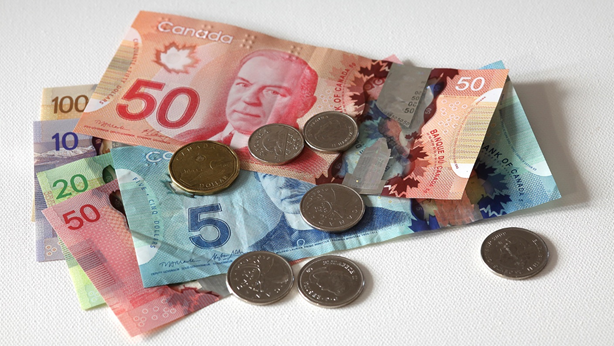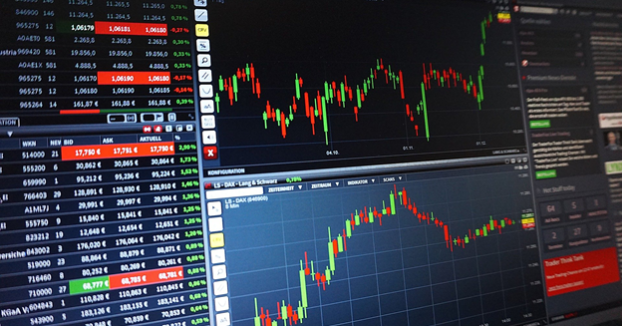COVID-19 maintained its stronghold on the global economy throughout the first quarter of 2021. However, the giant strides made by several countries in terms of vaccination has seen many begin to step out of the dark clouds of uncertainty. If the ravaging third wave being witnessed in Brazil and India can’t be quickly brought under control, the global economy may yet suffer another relapse.
As economies roar back to life, the demand for oil has skyrocketed. In addition, countries have now begun to make changes to reverse the various expansionary policies that they turned to during the pandemic. This is to keep inflation in check while also trying to drive down rising unemployment rates.
Oil Prices and High Unemployment in the U.S.
Historically, the price of oil is inversely related to the dollar. This phenomenon has reared its head as oil prices rallied to a six-week high at the end of April. This is in response to the increase in demand by industries returning to full production capacity worldwide. The U.S. dollar has taken a hit with three consecutive weeks of decline, which brought the Dollar Index down to 90.80 by the end of the month.
But it’s not all doom and gloom for the currency. The U.S. futures showed positive trends— notably the DOW was up by more than 2.5% in April. Economic growth continued on the uptrend, primarily fueled by the massive stimulus checks paid by the Biden-led government to businesses and households. This growth has just been outweighed by the rallying global oil prices.
Finance analysts observed more worrying signs for the U.S. economy with a surge of unemployment, contrasting the March trend. Private payroll data released by the ADP showed that there were 742,000 new jobs in the U.S. in April—over 50,000 short of the 800,000 projections made by the Dow Jones analysts.
It will be interesting to see how the U.S. economy reacts to reverse the dollar decline over the next few months.
EU Vaccination catch-up, Suez Canal Blockage & Industrial drive
Economic activity in the Eurozone has been buoyed by the widespread successes of vaccination campaigns across the continent. At the end of April, of the top 20 vaccinated nations, 11 were in Europe alone.

© Gerd Altmann on Pixabay
IHS Markit’s PMI reports, which measure activity in the manufacturing and services sectors, showed that production activity in the EU rose to 53.7 in April from 53.2 in March. Quite notably, France’s composite PMI climbed to 51.7—the first business activity expansion since August 2020. The positive momentum in industrial activity resonates in the entire ECA region. The trend is expected to continue as countries like Italy and Greece begin to relax lockdown restrictions gradually.
In late March, experts had predicted that the blockage of the Suez Canal could lead to some inflationary pressure across Europe and this also came into play in April. Inflationary pressures continued to pick up with the annual inflation rate in the Euro area accelerating from 1.3% to 1.6% in April. This is due to sharp increases in prices for energy and imported inputs shooting up production costs in the Eurozone. This ultimately led to increasing prices of household items like food, alcohol, and tobacco.
A senior economist at ING, Bert Colijn, said that slightly higher inflation is expected in the coming weeks, as input shortages and some supply chain caused import prices to jump. Businesses are expected to absorb some parts of the increased costs, however, much of it will be eventually passed on to the final consumers.
On the Monetary Policy front, the ECB stood firm while assuring timely support when necessary. ECB chiefs noted that the current inflation rates are still within the target short-term rate of 2%. This is required to drive economic growth as the ECB sets out to consolidate on the gains from the COVID-19 vaccination rebound.
U.K. Vaccine Race and Scottish Elections
Having been one of the countries at the front of the Pfizer vaccine queue, the U.K. economy quickly gained some traction in the first quarter of 2021. In response, the Pound rose as economic activity gradually rolled into action way ahead of their neighbors in the Eurozone.

© Pete Linforth on Pixabay
However, the Pound Sterling didn’t perform as well as expected in April. Analysts warned that the early 2021 boost to the Sterling from being ahead in the vaccine race could now be gradually extinguished as other countries catch up in terms of vaccination rates.
In addition, political trends have reinforced pessimism around the U.K.’s economy. Investors exhibited some restraints in anticipation of Scottish elections in May, which could spur uncertainties about yet another independence referendum.
Stimulus Package & Oil Gains
Back in March, despite debt overheating warnings by the IMF, the Canadian government went ahead to push for another $100 billion CAD injection into the economy. In efforts to balance this expansionary cash outlaw, the Bank of Canada announced it would reduce the amount of government bonds it would purchase. These fiscal activities led to the Canadian dollar losing some ground to the U.S. dollar in the first half of April and ceding some of the gains recorded in March.

© Ptra on Pixabay
However, buoyant oil prices helped keep the CAD sustain its gains as Canada’s USD earnings from oil exports to the U.S. in April 2021 increased significantly. In addition, the U.S. President Joe Biden continued an expansionary drive for additional government spending to bolster investor bets on the global economic recovery.
These factors saw the Canadian dollar strengthen to a three-year high against its U.S. counterpart at the end of April. Canada added far more jobs than expected in March, bringing employment within 1.5% of pre-pandemic levels. However, the employment figures slid by 0.6% in April. CAD is poised to maintain its solid run against the USD for the foreseeable future.
Wrap Up
The third wave of the pandemic in India and Brazil is indeed worrying, but as the UN and the COVAX initiative make frantic efforts to address the scourge, it is expected to be brought under control in due time.
Unemployment and high oil prices remain huge stumbling blocks to full recovery of global economies. It is expected that these issues will persist globally, albeit, at varying levels, well into the second half of the year.
However, with the countries easing lockdown measures and manufacturing gradually approaching pre-pandemic levels, investors, evidently, have good reason to be optimistic.




